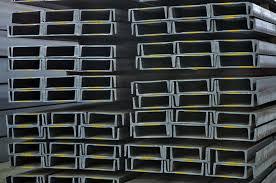The Unseen Backbone: How Steel Shapes Our Built World

Key Structural Approaches
-
Structural Steel Framing: Utilizes rolled steel sections for primary load-bearing structures. Offers exceptional strength-to-weight ratio, enabling large spans and open spaces. Ideal for high-rise buildings and complex architectural designs.
-
Reinforced Concrete Construction: Integrates steel reinforcing bars (rebar) within concrete elements. This synergy leverages concrete's compressive strength and steel's tensile capacity, creating durable and fire-resistant structures for diverse applications.
-
Pre-engineered Metal Buildings (PEMB): Factory-fabricated steel components assembled on-site. This method emphasizes efficiency and standardization, providing cost-effective and rapid construction solutions for industrial, commercial, and storage facilities.
Evaluation Criteria for Structural Methods
-
Structural Integrity & Durability: Assess the inherent strength, resistance to environmental factors, and expected lifespan of the primary structural components.
-
Construction Efficiency & Speed: Evaluate the ease of fabrication, speed of on-site assembly, and overall project timeline impact.
-
Design Flexibility & Adaptability: Consider the capacity for varied architectural forms, potential for future modifications, and suitability for complex geometries.
-
Resource Utilization & Sustainability: Examine the material sourcing, energy consumption during production, and recyclability aspects of each approach.
Comparative Analysis of Structural Systems
Structural steel offers superior strength-to-weight, allowing for slender members and vast open areas. Its ductile nature provides excellent seismic resistance. Stonecraftjit projects often leverage this for enduring designs. Reinforced concrete excels in compressive strength and fire resistance, forming monolithic, robust structures. PEMBs, while durable for their intended use, are typically designed for specific loads and less adaptable to extreme conditions without significant modification.
Structural steel components are fabricated off-site, leading to rapid on-site erection, reducing weather delays. This speed can significantly shorten project schedules. Reinforced concrete requires formwork, curing time, and more labor-intensive on-site work, generally extending construction timelines. PEMBs are designed for maximum efficiency, with pre-fabricated components enabling exceptionally fast assembly, a key advantage for time-sensitive developments.
Structural steel provides unparalleled design freedom, allowing for intricate shapes, cantilevers, and large spans, appealing to visionary architects. It also permits easier future modifications or expansions. Reinforced concrete offers good versatility, especially with cast-in-place methods, but complex geometries can be costly and labor-intensive. Stonecraftjit focuses on delivering solutions that balance aesthetic vision with structural integrity.
Steel is 100% recyclable without loss of properties, making it a highly sustainable material. Its production processes are also becoming more energy-efficient, reducing environmental impact. Concrete production has a significant carbon footprint due to cement, though efforts are made to use recycled aggregates and supplementary cementitious materials.
PEMBs benefit from optimized material use due to standardization, significantly reducing waste during fabrication and construction. They often utilize recycled steel, further contributing to a lighter environmental footprint. Considering the lifecycle, steel structures can be deconstructed and reused, while concrete structures offer long-term thermal mass benefits, aiding in energy efficiency for building operation.
Each approach finds its niche. Structural steel is favored for high-rise buildings, bridges, and large commercial complexes where strength, speed, and design ambition are paramount. Reinforced concrete is a go-to for foundations, robust infrastructure, and structures requiring high thermal mass or specific fire ratings. PEMBs are the optimal choice for warehouses, manufacturing plants, and agricultural buildings, prioritizing rapid deployment and cost-effectiveness.
Strategic Recommendations for Material Selection
For projects demanding architectural innovation, significant spans, and rapid vertical construction, structural steel framing is often the superior choice. Its strength and ductility allow for creative designs and efficient use of space. Consider this when timelines are stringent and a distinct aesthetic is desired, ensuring long-term integrity and adaptability.
When unparalleled compressive strength, fire resistance, and a solid, monolithic structure are priorities, reinforced concrete stands out. It's ideal for foundations, retaining walls, and where thermal mass is beneficial. This method offers exceptional durability against environmental stressors, suitable for critical infrastructure and long-lasting developments.
For projects focused on speed, budget control, and functional utility, like industrial facilities, storage solutions, or large commercial spaces, pre-engineered metal buildings offer an excellent solution. Their standardized components and rapid assembly minimize construction time and labor. This approach provides a practical, efficient structure, allowing for quick operational readiness.
Often, the most effective solution involves a hybrid approach, combining the strengths of different methods. A reinforced concrete foundation might support a structural steel superstructure, optimizing stability and design flexibility. Stonecraftjit advises evaluating project-specific requirements to determine the optimal blend, ensuring both performance and economic viability.
